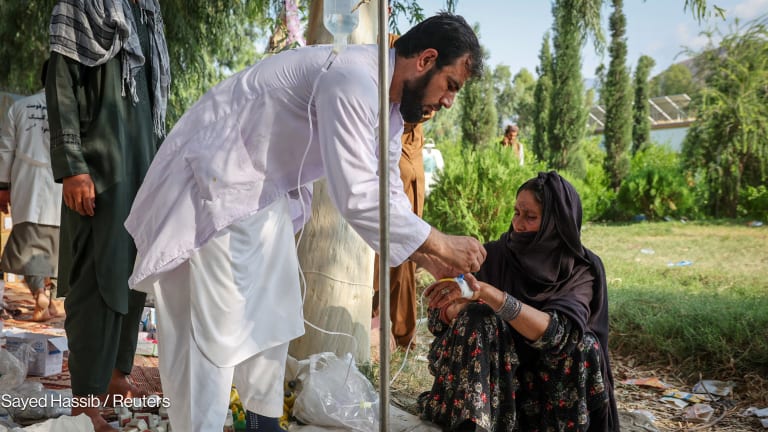
Two years ago today, at 4:53 p.m. local time, a 7.0-magnitude earthquake shook Haiti to the ground, triggering massive international relief and recovery that will take years.
Some 300,000 lost their lives that day, including many working in international development. Since then, half of the rubble has been cleared, 4.3 million people have received food aid and 1.5 million people have received shelter, clean water and health kits, according to the United Nations.
Assessing Haiti today is like answering the question: Is the glass half full or half empty? In the case of Haiti, you may ask: How large is the glass?
Two months after the quake, the Haitian government, in collaboration with international donors, attempted an answer to the latter question in a Post-Disaster Needs Assessment that included a detailed listing of damage, losses and needs by sector. Most funding appeals have focused on shelter, water and sanitation, health and the protection of women and children, as my colleague Jenny Ravelo writes today. But less than two-thirds of all donor pledges have been disbursed so far, as my colleague Ivy Mungcal reminds us.
The Interim Haiti Recovery Commission, formed after the disaster to coordinate reconstruction, has been criticized for being bureaucratic and taking too long to approve development projects. But after its mandate expired Oct. 21, fears about project delays grew despite Prime Minister Garry Conille’s promise that 2012 would be a “year of reconstruction and economic recovery in Haiti, with a growth rate of 8 percent,” as Agence France-Presse reports. Even Conille wants the IHRC back.
Haiti’s challenges and opportunities were the focus of a recent op-ed by U.S. Department of State Chief of Staff Cheryl Mills and, last Friday, of a call hosted by the United Nations Foundation featuring several high-level U.N. and U.S. officials. After the call, I asked Elizabeth Hogan, director of the U.S. Agency for International Development’s Haiti task team, about cautious efforts to funnel more aid through local institutions.
“While using more in-country partners may mean sacrificing some immediate development impact,” Hogan said, “the long-term impact and sustainability of development outcomes will be strengthened.”
I asked another USAID official what the agency had learned from Haiti and other emergencies like the ongoing refugee crisis in the Horn of Africa. The official pointed to funding increases for the Office of U.S. Foreign Disaster Assistance and the integration of disaster risk-reduction programs “into a range of disaster response programs,” as well as the creation of disaster risk-reduction guidelines in collaboration with U.N. partners.
Specific to Haiti, for instance, USAID has sent a team of seismologists and geologists to create hazard map products that will form the basis for developing seismic guidelines for the rebuilding of habitation and infrastructure. USAID and other donors are also discussing possibilities of mainstreaming disaster risk reduction into long-term development programs.
The day this happens can’t come too soon.
Read last week’s Development Buzz.








